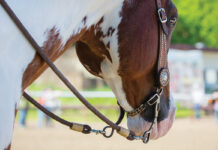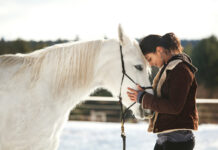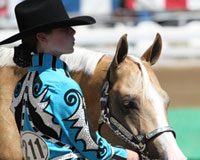Squaring up your showmanship horse is a deceptively simple concept. How hard can it be for a horse to stand evenly over all four feet? But this simple requirement can be a challenge to achieve consistently, and a flaw in your horse’s stance could be enough to knock you out of the ribbons.
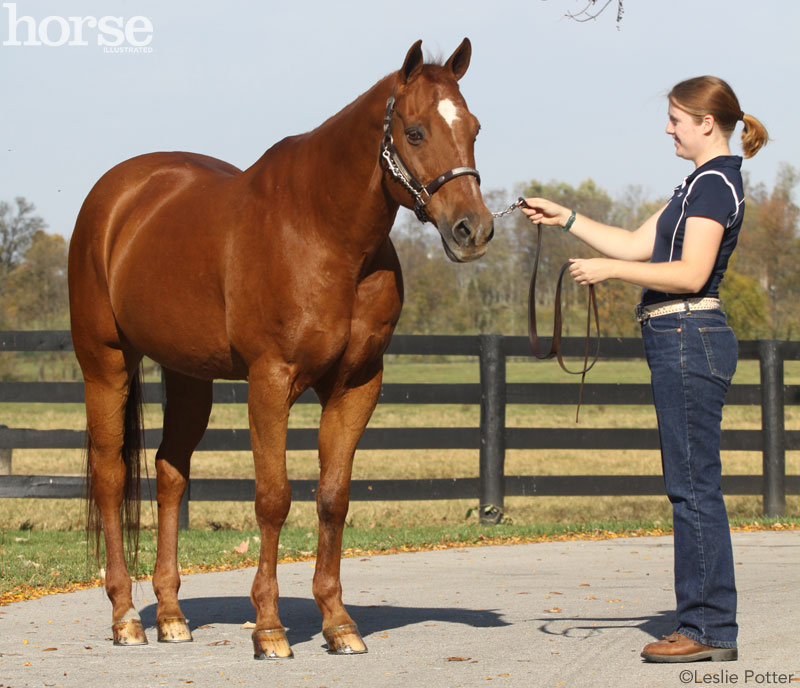
Getting Started
Marianne Bartley-Lehman, an American Quarter Horse Association Professional Horseman and judge based in Midway, Ky., explains that your horse needs to have a solid foundation before you can fine-tune him for showmanship.
“Your horse should have some basic skills, such as knowing how to walk beside you,” explains Bartley-Lehman. “When you push forward on the shank and cluck to move faster, he should at least think about trotting. He should show some signs of give when you push back on the shank.”
One of the most important ingredients of a showmanship horse is a solid understanding of “whoa.” Your horse needs to know that when you tell him “whoa,” it means to stop and stand still until given a cue to move.
“Tell your horse to whoa and then help him stand still,” says Bartley-Lehman. “Don’t say it and then spank him or snatch on him [to try and stop him from moving his feet]. These types of actions can undo anything you may have taught him.
“If he’s not still after the command, calmly and consistently correct him by bumping him with the chain and stepping back,” adds Bartley-Lehman. “Start softly and gradually increase the pressure until you get the desired result.” When he gets it right, reward him with a release of pressure, a pat on the neck, and occasionally a small treat. “The key here is to teach the horse the importance of whoa in a consistent, calm manner.”
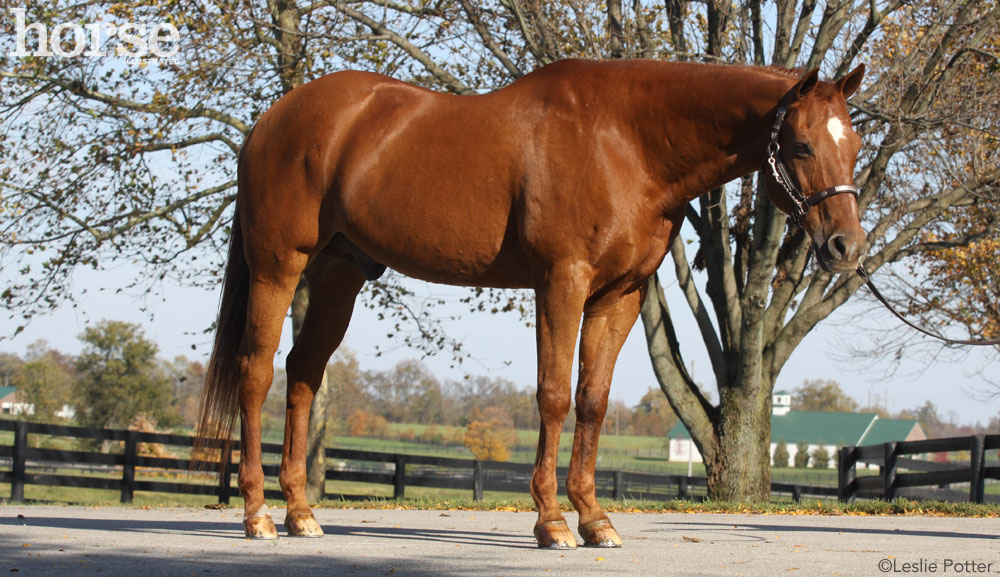
Communication is Key
Once your horse is able to halt and stand consistently at your command, you can move on to the next steps of teaching him to square up. This is a very specific goal, and it may take several training sessions before your horse starts to get it right. Be calm and patient, and don’t allow yourself to get frustrated.
“It’s best to work with your horse on squaring up in short, daily sessions, about 15 to 30 minutes,” says Bartley-Lehman. “You must first be sure he will stand still and quietly for a period of time. Start with five minutes and work up to 15 minutes or more.”
You will be penalized if you touch your horse during the class, so your goal is to be able to cue your horse using just your lead shank and body language.
“Once your horse understands how to stand quietly, you’ll need to work on a communication system for moving your horse’s feet forward and back,” explains Bartley-Lehman. “Maintain a level with your hand that is comfortable for the horse’s stature; ideally your hand should be even with the side ring of the halter. Then use even, forward and backward pressure to ask your horse to move his feet forward and back. When the foot is where you want it, lift on the halter, say ‘whoa,’ loosen up on the shank, and then step back a little bit to indicate you no longer want your horse to move his feet.
“A common mistake people make when asking their horse to move his feet is to pull downward on the shank,” continues Bartley-Lehman. “Horses naturally are fearful of their heads being restrained downward; the result is a resistant horse and a frustrated handler.”
Once you have the backward and forward cues established, you can work on refining individual foot placement. This will take patience and careful practice. Pay attention to how your horse reacts to your cues, and use no more pressure than what is required to get a response from him.
“Teach your horse which foot to move by moving the shank a little to the left or right as you apply pressure,” says Bartley-Lehman. “Think of shifting the weight off of the foot you need your horse to move. Every horse is different; that’s why it takes time and consistency to build up a communication system with your horse.”
Perfecting the showmanship stance requires a great deal of practice. Short sessions every day will get you the best results for a consistent performance from your horse. During your practice sessions, you can pick up and place a foot where it needs to be or gently push on your horse’s withers to get him to even out. However, use these hands-on methods sparingly, as they would be severely penalized in competition and you don’t want to become dependent on them.
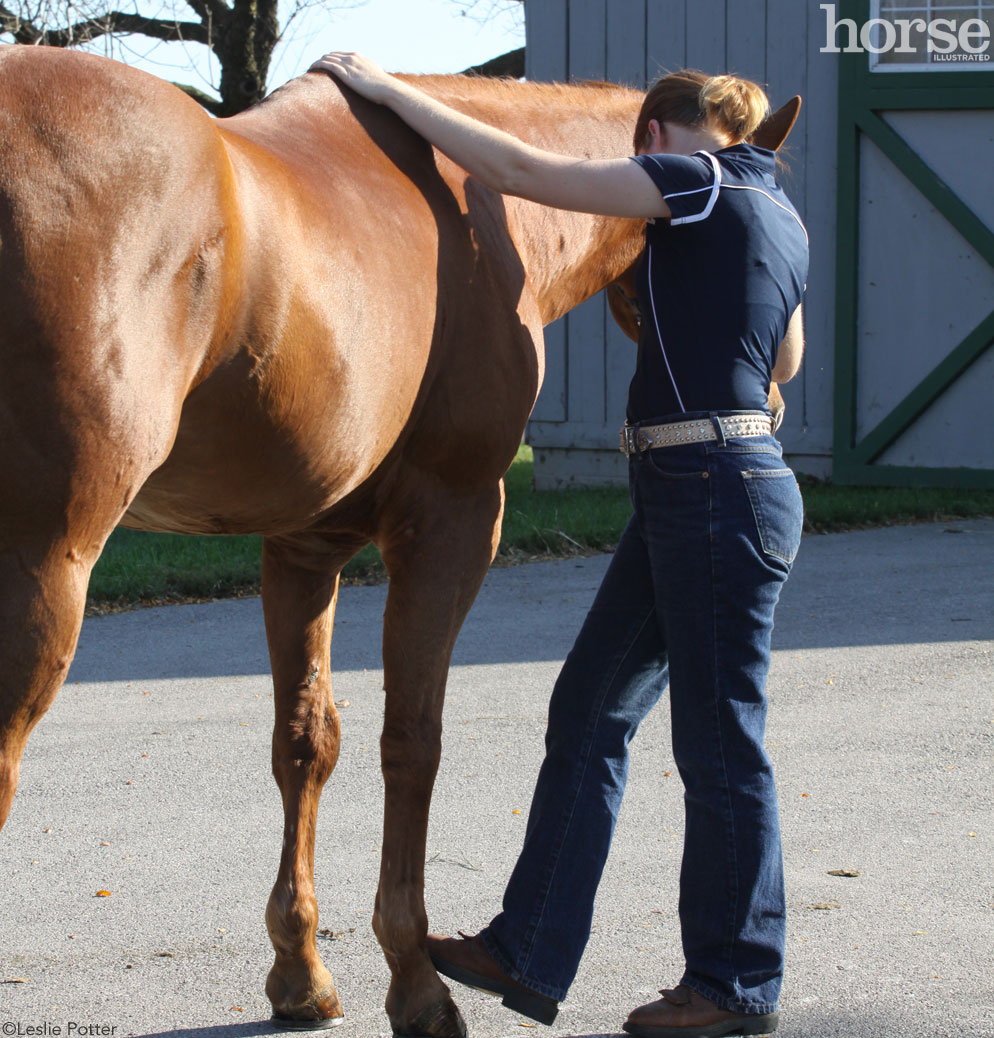
If you need to adjust the placement of your horse’s feet during the class, make sure you do so quickly and quietly and without obstructing the judge’s view of your horse. Bartley-Lehman explains that working too hard for a perfect stance can actually work against you if you can’t get the stance you want quickly and smoothly.
“If you can quickly fix your horse’s feet to perfection without being in the judge’s way, then do it,” says Bartley-Lehman. “But more often than not, you will need to wait for the judge to move before you fix the feet. Being quick and having the feet pretty close to square is better than taking forever to achieve perfection. If your horse moves his feet, some judges will step back and wait for you to acknowledge and fix the error. In that case, you will need to fix the feet immediately.”
Finding Faults
Before you put in the time and effort to perfect your horse’s foot placement, make sure the stance you’re going for is actually square. All four feet should be evenly placed underneath his body. with his cannon bones perpendicular to the ground.
“The most common fault I see is the exhibitor who keeps inching the front feet forward to get them even, and the next thing you know their Quarter Horse is parked out like a Morgan,” says Bartley-Lehman. “Occasionally I will see an exhibitor stand the horse up camped under, and every so often someone will appear to forget to set the horse up at all.”
As an exhibitor, you want to demonstrate to the judge that you are aware of what your horse is doing at all times while being judged.
“Even if you stop at the judge and your horse stops perfectly square, you should turn and check your horse, showing acknowledgement that he is square by saying ‘whoa,’ taking a step back to show your horse, and looking up at the judge with confidence,” says Bartley-Lehman.
“The great thing about working with your horse on showmanship, and especially the skill of squaring up, is the communication and bond you build up with your equine partner,” says Bartley-Lehman.
Find out how to fit your horse’s halter for showmanship >>
Special thanks to our models Jennifer Lewis and American Quarter Horse gelding Jetoes Sorrel Man for demonstrating these tips.
This article originally appeared in the April 2013 issue of Horse Illustrated magazine. Click here to subscribe!


